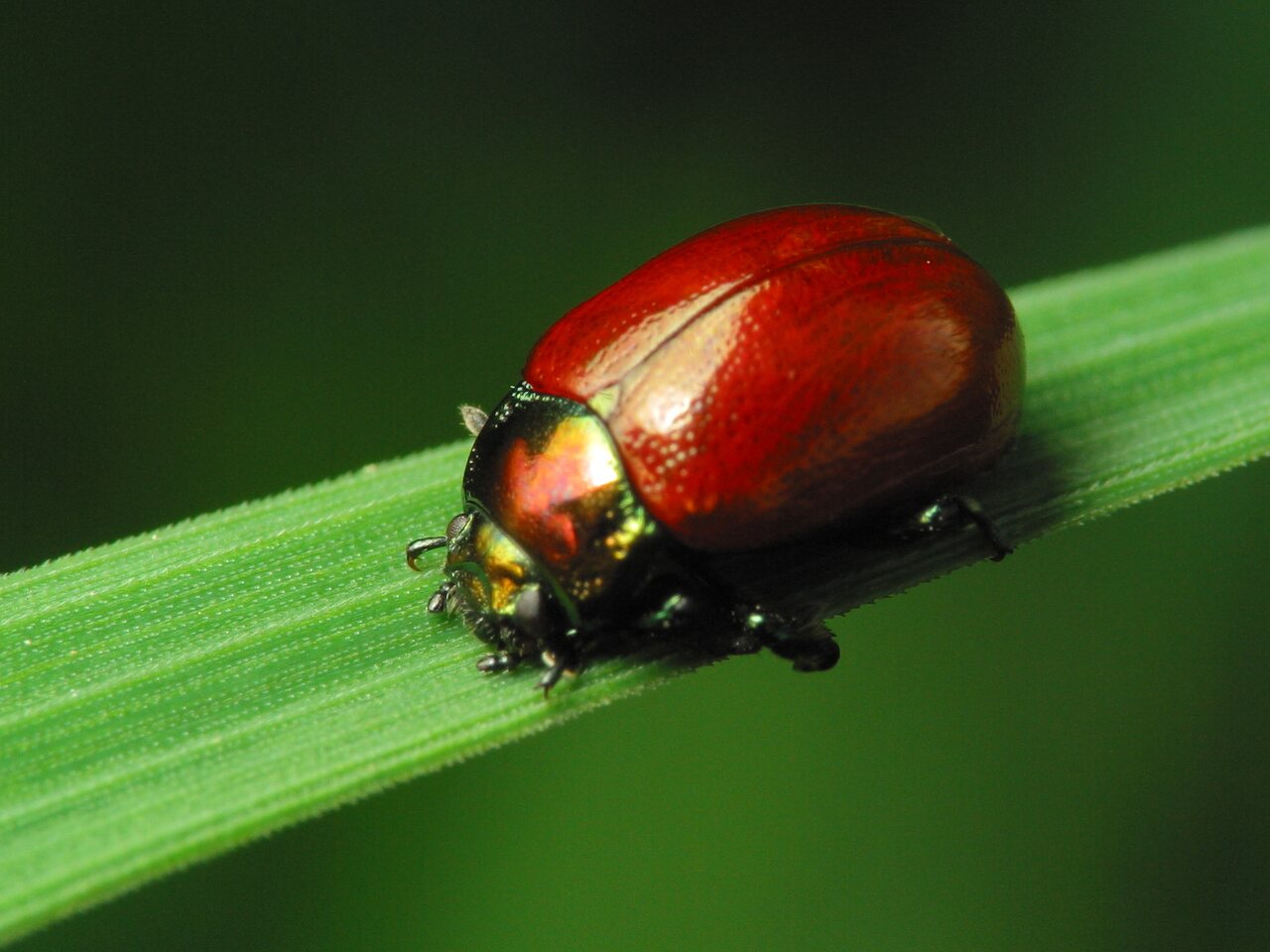
Chrysolina polita · mėtinis puošnys
- Chrysomela polita
- Knotgrass leaf beetle
- Forskelligfarvet guldbille
- Geglättete Blattkäfer
- minttukuoriainen
- mėtinis puošnys
- tweekleurig goudhaantje, tweekleurige goudhaan, Moertje
- złotka cynobrowa
- vattenmyntebagge
This is very widespread and generally common species occurring throughout the Palaearctic region, except for the far north, and extending east through Mongolia to China. Further south it is widespread through Iran, Iraq and Turkey. They occur in a wide variety of habitats including calcareous grassland, parkland, woodland and all kinds of wetland. Host plants include a range of Lamiaceae; especially mints (Mentha spp.) and nettles (Urtica spp.) but also thyme (Thymus polytrichus) and dead-nettles (Lamium sp.) among others. Adults appear during March or April and may be seen feeding on the hosts during warm weather, they disperse by flight in May and by June they should be obvious. Oviposition occurs through June and July; eggs are laid in small batches on the underside of the host leaves and larval development is rapid; they pass through 4 instars and are fully grown by August. Pupation occurs in a cell in the ground below the host and new generation adults appear during August and September. Depending upon the season adults remain active into October or November, after which they overwinter among leaf-litter, in tussocks or under logs and bark.
The large size and distinctive colouration should make the species unmistakable even in the field; among the U.K. fauna some Chrysomela spp. are superficially similar but they lack the fringe of fine setae along the elytral margins towards the apex. 5.5-9.5mm. Entire insect, but for the elytra and one or two basal antennal segments, black with a metallic green or coppery reflection. Head transverse with prominent eyes, the surface shiny, finely punctured and with a Y-shaped impression (sometimes very faint) extending back from the clypeus. Clypeus transverse and truncate or weakly arcuate. Pronotum transverse with a weak impression behind the anterior margin and a much stronger and wider, coarsely punctured, impression parallel to the lateral margins. Surface shiny and very finely punctured. Elytra red and lacking a metallic lustre; usually bright but sometimes darker and occasionally appearing brown. Surface finely and randomly punctured, these vary in size with some being a little larger than those on the pronotum, towards the suture and the lateral margins they may form longitudinal series. Legs black but for the claws which are pale. The male tarsal segments are a little more dilated when compared to those of the female. On the continent names have been given to various aberrations in which the elytra are black, either with or without a metallic lustre, or where the rest of the body lacks a metallic lustre.
‥
0 comments
Add a comment